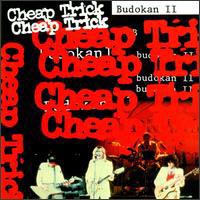
Budokan II (1994)

1.ELO Kiddies
2.High Roller
3.Southern Girls
4.Speak Now or Forever Hold Your Piece
5.California Man
6.Downed
7.Stiff Competition
8.How Are You?
9.On Top of the World
10.Can't Hold On
11.Oh Caroline
12.Auf Weidersehen
A curious artifact, Budokan II arrived in 1994 with little fanfare and even less band enthusiasm.
While At Budokan had cemented Cheap Trick’s reputation as power-pop evangelists to a screaming Japanese audience in 1978, this follow-up was not so much a
return as a reclamation—mined from the same fertile tour with a few chronological liberties. As documents go, it’s slightly disjointed,
often overlooked, and in its own way, quietly essential.
The source material is largely from the original Tokyo concerts, but purists will balk at the inclusion of three tracks—Stiff Competition,
How Are You, and On Top of the World—recorded a year later at the same venue. To add to the confusion, the cover art hails
from the 1979 return engagement, giving the whole project a faint air of bootleg repackaging. The band reportedly disapproved of the
release, citing (somewhat dubiously) artificial crowd noise loops, a betrayal both aesthetic and emotional. But such objections,
like many artistic disavowals, do little to diminish the historical value of the thing itself.
What emerges, despite the editorial hodgepodge, is a portrait of a band at its most taut and exuberant. Cheap Trick’s live prowess had already
been mythologized via At Budokan, but Budokan II adds texture to that legend. The setlist arguably bests its predecessor—less pandering
to the crowd-pleasers, more space for feral deep cuts and overlooked gems. The band is in ferocious form, playing with the kind of
tight abandon that only years of bar-band conditioning can produce.
That the record became somewhat redundant after the release of At Budokan: The Complete Concert in 1998 is inevitable. That edition restored the correct
running order and added polish, but it also removed the three bonus tracks—making Budokan II, ironically, the more expansive if less authentic
document. Therein lies the paradox: this imperfect sequel may not be canonical, but it’s far from disposable.
One is left with the sense that, despite its flaws, Budokan II matters—not because it tells us something new about Cheap Trick,
but because it affirms what we already knew. They were, quite simply, one of the greatest live bands of their era. Even when the paperwork was messy.
Go back to the main page
Go To Next Review